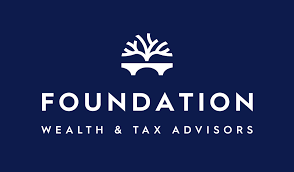The year 2023 unfolded with noteworthy events in the U.S. financial markets, prompting inevitable curiosity about the prospects for 2024. Recognizing this, our team provides a comprehensive overview of the past year and an outlook for what we think lies ahead.
U.S. Equities
In 2023, U.S. equities exhibited strength, resilience, and a certain defiance of conventional expectations. Despite periods of bearish sentiment in March and October, triggered by regional bank concerns and elevated interest rates, the year concluded with remarkable returns. The S&P 500 recorded a 24.23% gain, the Nasdaq 100 soared by an impressive 53.81%, and the Dow Jones Industrial Average experienced a rise of 13.70%.
Heading into 2024, a prevalent theme is the substantial amount of cash on the sidelines, amounting to a record $6 trillion. This surplus could potentially bolster the equity market if strategically invested this year.
Other Asset Classes
Bonds: The bond market faced challenges with a three-year bear market, marked by the benchmark 10-year Treasury yield fluctuating between 3.253% and approximately 5.0%. Towards the end of 2023, bond buyers found relief as interest rates trended lower.
Gold: Despite rising interest rates for the majority of the year, the SPDR Gold Trust ETF (GLD) delivered a resilient performance, rising by 12.69%. With expectations of steady to lower interest rates, precious metals might garner increased attention in 2024.
Megacap Crypto: Bitcoin, the largest cryptocurrency, experienced a stellar 2023, surging by approximately 154%. Anticipation surrounds the potential approval of a spot Bitcoin ETF, and optimism is fueled by the upcoming Bitcoin "halving" event in Q1-Q2 2024.
Inflation
Commodity Prices: Broadly measured by the S&P Goldman Sachs Commodity Index, commodity prices fell in 2023, indicating lower wholesale prices. Consumer benefits may materialize if corporations refrain from significant markups.
Consumer Price Index (CPI): Consumer inflation, as measured by the CPI, peaked in June 2022 and steadily declined throughout 2023. However, consumer expenses may not align with the decline, with stubbornly high service and shelter prices. Core CPI showed a year-over-year rise of 4% in November 2023.
The Consumer Heading Into 2024
The U.S. consumer demonstrated resilience. Consumer confidence rose in tandem with the stock market rally, reaching a five-month high at the end of 2023. Despite increasing consumer debt, particularly in non-housing and credit card categories, spending on experiences prevailed over material goods.
Retail sales remained on a steady uptrend throughout 2023, showcasing impressive post-Covid consumer spending. However, early data for the holiday shopping season indicated a slight slowdown, raising questions about consumer spending trends in 2024.
Labor Market
The labor market in 2023 is hailed by some as the best on record, characterized by low unemployment and narrowing wage inequality. Jobs growth, initially robust, cooled towards the latter part of the year, aligning with constructive market sentiment. Economists anticipate stability in job growth for 2024, supported by diminishing inflation and a more accommodative Federal Reserve.
Energy
After witnessing rising crude oil prices in the first half of 2023, the narrative shifted with crude oil and gasoline prices falling in the final months. Heading into 2024, reports indicate a slowdown in electric vehicle sales, potential influences from the election year, and concerns about renewable energy supply chain bottlenecks.
Election Year
The presidential election year introduces potential volatility, historically impacting markets. The S&P 500 has yielded an average 7% return in election years since 1952, with investors closely scrutinizing economic policies of potential presidential winners.
Federal Reserve Outlook
As major market indexes rose in November and December 2023, expectations for Federal Reserve (Fed) rate cuts surged. Market anticipations, reflecting six to seven quarter-point rate cuts starting in March 2024, diverged from the Fed's communicated plan of three cuts in 2024. While the Fed remains optimistic about inflation, some market expectations may have outpaced the central bank's stance.
Long-Term Effects
Amidst the dynamic financial landscape, the importance of long-term investing is emphasized. Reflecting on historical instances, including the challenging times of March 2020 and the events of March and October 2023, underscores the resilience of the market. Selling assets impulsively during times of uncertainty has proven counterproductive. Maintaining a level-headed and disciplined approach aligns with historical trends, as exemplified by the positive annual gains of the S&P 500 in approximately 70% of its 66-year history.
The Benefit of a Fee-Only Advisor
In navigating the intricacies of the evolving financial landscape in 2024, the guidance of a fee-only advisor becomes especially valuable. Their unbiased expertise can assist investors in developing tailored strategies that align with individual goals and market conditions. By working with a fee-only advisor, such as Foundation Wealth and Tax Advisors, investors gain access to personalized financial advice and wealth management strategies that prioritizes their best interests, fostering a more informed and confident approach to managing investments.
As we embark on a new year, the wisdom of learning from history remains crucial. I encourage you to keep the benefits of long-term investing in mind and, should you have any inquiries regarding stocks, interest rates, energy, or your portfolio, contact our team.





Comments